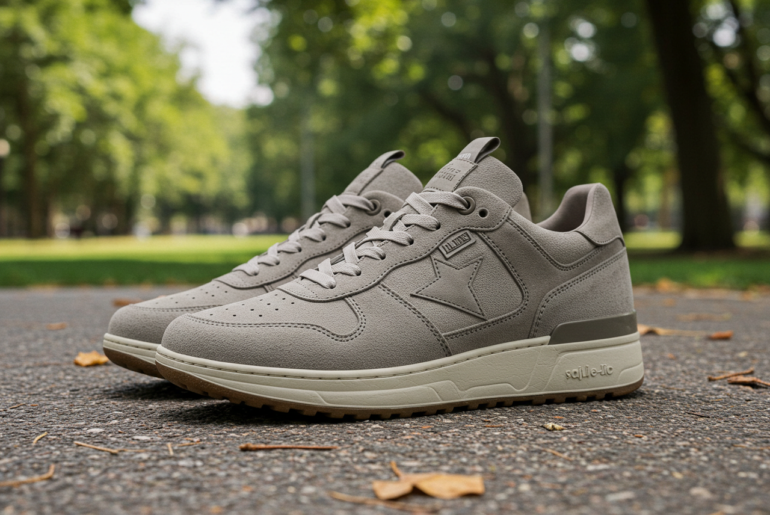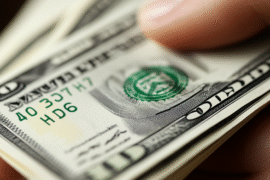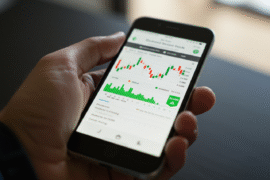This article may contain references to products or services from one or more of our advertisers or partners. We may receive compensation when you click on links to those products or services. Nonetheless, our opinions are our own.
The information presented in this article is accurate to the best of our knowledge at the time of publication. However, information is subject to change, and no guarantees are made about the continued accuracy or completeness of this content after its publication date.
Key Highlights
- Tariffs on imports might raise sneaker prices by up to 87%, changing the footwear market.
- The U.S. footwear industry already pays some of the highest import fees in all areas.
- Both luxury brands and regular sneakers are likely to feel the impact.
- Brands like Adidas are looking for other ways to reduce rising costs.
- Shoppers might notice changes in free shipping and return rules as brands deal with expenses.
- Experts in the industry mention changes in how things are made as a way to handle price limits better.
Introduction
Prices for men’s sneakers, especially popular leather ones, might go up a lot because of new taxes on imported shoes. As brands try to manage these extra costs, benefits like free shipping and easy returns might be less common. Sneakers, which are a big part of fashion, could soon be less easy to buy for regular customers. Knowing how taxes change the shoe supply can help both shoppers and retailers get ready for changes coming in the market.
Tariffs and Their Effect on Sneaker Prices
Tariffs are taxes on goods brought into a country. They are often used to help local businesses or achieve trade goals. In retail, tariffs can greatly raise the final prices of products. This is especially true for industries like footwear, which depend a lot on global supply chains.
The shoe industry already has some of the highest taxes on products. When new fees are added, companies have to take on the added costs or charge more to customers. Because the industry’s profit margins are often small, most brands choose to increase the prices in stores.
This challenge makes companies think about how and where they make and send their products. Sourcing materials and changing logistics affect every step. So, rising costs will hit all kinds of footwear—from everyday sneakers to fancy designer shoes.
What Are Tariffs and How Do They Work?
Tariffs are worked out as a percentage of how much a product is worth. This includes what it costs to make, ship, and insure them. For shoe brands, this means a heavy tax to pay when they bring their goods into the country.
When tariffs go up, companies that bring in goods like men’s sneakers have to spend more to move their stock. To keep making money, many raise their retail prices. Some look for ways to cut costs by changing how they operate. This usually means fewer benefits for customers, like free shipping or longer return options.
These extra tasks put pressure on brands to change their supply chains. Some companies move production to different countries. Others search for new materials or machines to help cut costs.
A Historical Look at Footwear Tariffs
Tariffs in the U.S. footwear market go back a long way. The Smoot-Hawley Tariff Act of 1930 set high duties to help local producers, which included companies making dress shoes and leather boots.
| Footwear Type | Initial Tariff Rate | Recent Tariff Rates |
|---|---|---|
| Dress Shoes | 10% | 20% |
| Casual Sneakers | 5% | 12% |
| Luxury Leather Shoes | 25% | 35% |
Over time, globalization grew the country’s dependence on imports. Recent trade issues have raised tariff levels even more, making things harder for brands and consumers. These changes show how tariffs have long changed prices in the footwear industry.
How Brands Are Responding to Rising Costs
The rise in costs has made shoe companies think about their plans. Many are doing things to cut costs and still keep good quality.
Companies are trying out new materials and putting money into advanced manufacturing technologies. Meanwhile, consumers are adapting by shopping during seasonal sales, looking for budget-friendly options, or cutting back on non-essential purchases. These efforts together can lessen the effects of rising prices.
Exploring Other Manufacturing Locations
Shifting production to new areas is one way brands like Adidas are dealing with the pressure of tariffs. Moving operations to countries with good trade agreements and affordable labor helps keep production costs steady.
Some promising locations include
- Vietnam—known for its strong ability to make shoes and low labor costs.
- India—Provides skilled workers for leather and fashion items at good prices.
- Indonesia—a rising player in making sneakers and formal shoes.
By changing up their supply chains, companies can keep their products in stock and stay good with prices. This way also helps them be strong against future trade problems. It lets them keep making new things and helps customers get what they need.
Voted "Best Overall Budgeting App" by Forbes and WSJ
Monarch Money helps you budget, track spending, set goals, and plan your financial future—all in one app.
Get 50% OFF your first year with code MONARCHVIP
Conclusion
Sneaker prices could go up by 87% because of rising tariffs. This is a big worry for both buyers and makers. Knowing how tariffs affect the shoe supply chain gives us a clear idea of why prices might rise.
Brands are changing how they make and source products to lower cost increases. It is important for both shoppers and companies to adapt to these changes. Whether you get sneakers for how useful they are or just for looks, it’s a good idea to stay informed and rethink how you buy as the market changes.
Frequently Asked Questions
How do tariffs change sneaker prices?
Tariffs can raise the cost of making and bringing in sneakers. Often, these costs are passed to buyers. In serious cases, prices might go up by as much as 87%. This can make sneakers less affordable and hurt sales.
What are some other places to make sneakers?
Countries such as Vietnam, India, and Indonesia are becoming important options. These areas provide lower production costs and good support for making shoes.
Why are free shipping and returns changing for sneaker purchases?
Brands are cutting back on free shipping and returns to manage higher import costs caused by tariffs. As companies look for ways to stay profitable, they reduce extra services that cost money. Shoppers may need to adjust expectations when buying
How are luxury sneaker brands affected differently by tariffs?
Luxury brands face the same tariff increases, but their higher profit margins give them more room to absorb costs. Still, many raise prices or reduce perks to protect profits.

Reviewed and edited by Albert Fang.
See a typo or want to suggest an edit/revision to the content? Use the contact us form to provide feedback.
At FangWallet, we value editorial integrity and open collaboration in curating quality content for readers to enjoy. Much appreciated for the assist.
Did you like our article and find it insightful? We encourage sharing the article link with family and friends to benefit as well - better yet, sharing on social media. Thank you for the support! 🍉
Article Title: Sneakers Could Soon Cost 87% More—Here’s How Tariffs Are Driving Up Prices
https://fangwallet.com/2025/04/18/how-tariffs-are-driving-up-prices/The FangWallet Promise
FangWallet is an editorially independent resource - founded on breaking down challenging financial concepts for anyone to understand since 2014. While we adhere to editorial integrity, note that this post may contain references to products from our partners.
The FangWallet promise is always to have your best interest in mind and be transparent and honest about the financial picture.
Become an Insider

Subscribe to get a free daily budget planner printable to help get your money on track!
Make passive money the right way. No spam.
Editorial Disclaimer: The editorial content on this page is not provided by any of the companies mentioned. The opinions expressed here are the author's alone.
The content of this website is for informational purposes only and does not represent investment advice, or an offer or solicitation to buy or sell any security, investment, or product. Investors are encouraged to do their own due diligence, and, if necessary, consult professional advising before making any investment decisions. Investing involves a high degree of risk, and financial losses may occur including the potential loss of principal.
Source Citation References:
+ Inspo
There are no additional citations or references to note for this article at this time.












































